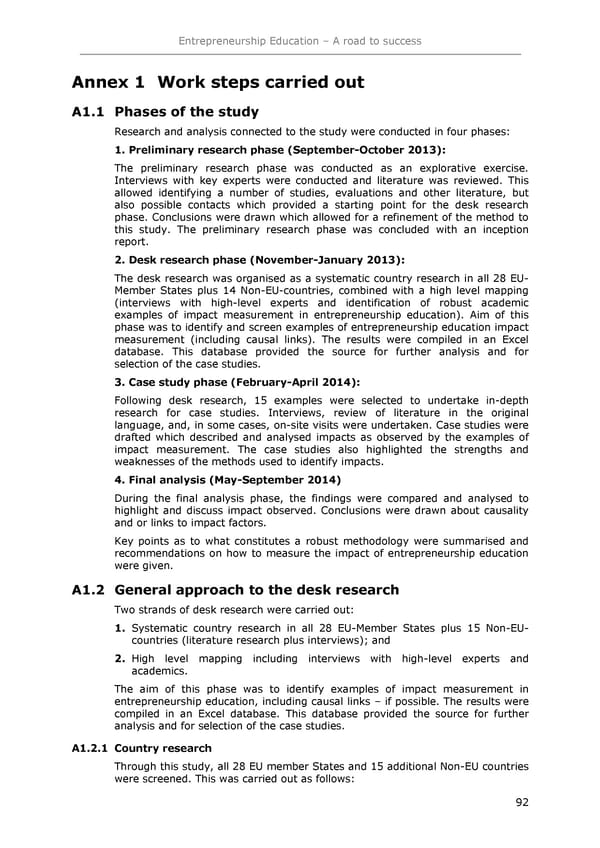Entrepreneurship Education 3 A road to success Annex 1 Work steps carried out A1.1 Phases of the study Research and analysis connected to the study were conducted in four phases: 1. Preliminary research phase (September-October 2013): The preliminary research phase was conducted as an explorative exercise. Interviews with key experts were conducted and literature was reviewed. This allowed identifying a number of studies, evaluations and other literature, but also possible contacts which provided a starting point for the desk research phase. Conclusions were drawn which allowed for a refinement of the method to this study. The preliminary research phase was concluded with an inception report. 2. Desk research phase (November-January 2013): The desk research was organised as a systematic country research in all 28 EU- Member States plus 14 Non-EU-countries, combined with a high level mapping (interviews with high-level experts and identification of robust academic examples of impact measurement in entrepreneurship education). Aim of this phase was to identify and screen examples of entrepreneurship education impact measurement (including causal links). The results were compiled in an Excel database. This database provided the source for further analysis and for selection of the case studies. 3. Case study phase (February-April 2014): Following desk research, 15 examples were selected to undertake in-depth research for case studies. Interviews, review of literature in the original language, and, in some cases, on-site visits were undertaken. Case studies were drafted which described and analysed impacts as observed by the examples of impact measurement. The case studies also highlighted the strengths and weaknesses of the methods used to identify impacts. 4. Final analysis (May-September 2014) During the final analysis phase, the findings were compared and analysed to highlight and discuss impact observed. Conclusions were drawn about causality and or links to impact factors. Key points as to what constitutes a robust methodology were summarised and recommendations on how to measure the impact of entrepreneurship education were given. A1.2 General approach to the desk research Two strands of desk research were carried out: 1. Systematic country research in all 28 EU-Member States plus 15 Non-EU- countries (literature research plus interviews); and 2. High level mapping including interviews with high-level experts and academics. The aim of this phase was to identify examples of impact measurement in entrepreneurship education, including causal links 3 if possible. The results were compiled in an Excel database. This database provided the source for further analysis and for selection of the case studies. A1.2.1 Country research Through this study, all 28 EU member States and 15 additional Non-EU countries were screened. This was carried out as follows: 92
 Entrepreneurship Education Page 95 Page 97
Entrepreneurship Education Page 95 Page 97